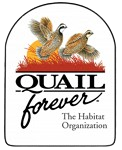Mearns Quail Study

Mearns Quail
PROPOSAL
JUSTIFICATION: Montezuma quail (Cyrtonyx montezumae) are typically regarded as an oak woodland species reaching their greatest abundance in Madrean Evergreen woodlands (Brown 1989). Montezuma quail have also been observed in Arizona in a variety of conifer and mixed conifer habitats on and below the Colorado Plateau at elevations ranging from 1,718m to >3,000m (5,600 – >9,000’) near Young, Canyon Creek, south of Heber, north of Pine, Sipe Wildlife Area, along Black River, near Big Lake, and on Escudilla Mountain (Ligon 1927, Leopold and McCabe 1957, Brown 1989, Babb 2012) despite reports showing that this species is susceptible to heavy snow cover and freezing temperatures (Yaeger 1966, Chavarria et al. 2012). Leopold (1957) thought that severe weather limited the latitude and elevational range of Montezuma quail and he and Bailey (1928) thought these birds undertook seasonal movements to more hospitable elevations to escape the effects of severe weather. However, such a strategy is unavailable to Montezuma quail in the White Mountains where movements of many kilometers would be required to locate areas of moderate temperatures. Reason dictates that these birds survive either by migrating to lower elevations, shorter distances to favorable exposures, or utilize select microhabitats to mitigate the impacts of high elevations winters.
Incidental observations, however, indicate that Montezuma quail are capable of persisting in good numbers for protracted periods at high elevations. Pre-settlement conditions on the Colorado Plateau included large trees with a dense grass understory, likely more favorable to Montezuma quail than present conditions after the advent of grazing and fire suppression. (Brown 1994). It may also be that climate and habitat shifts attendant with recent wildfires such as the Dude, Rodeo/Chediski, and Wallow Fires have restored Montezuma quail habitat at high elevations as sightings have increased in recent years above and adjacent to the Colorado Plateau (Dan Priest pers. comm., Craig McMullen pers. comm., Bruce Sitko pers. comm., Randy Babb pers. ob.).
If the above hypotheses are correct, and an increase in temperatures and fire occurrences, has resulted in an increase in grassland and savanna habitats at high elevations, Montezuma quail may continue to increase in distribution and numbers. Understanding the birds’ adaptive behaviors to changing habitats that allow their survival over harsh winters has management implications. If it can be demonstrated that high elevation populations of Montezuma quail are experiencing increased survival rates due to changing habitat conditions and an inherent adaptive strategy, it stands to reason that additional habitats may provide increased hunter opportunity.
OBJECTIVE: TO DETERMINE SEASONAL LOCATIONS AND MOVEMENTS OF MONTEZUMA QUAIL IN COLORADO PLATEAU HABITATS AND DOCUMENT IMPACTS OF RECENTLY BURNED AREAS ON ABUNDANCE AND DISTRIBUTION OF THESE QUAIL ABOVE 1800 METER ELEVATION.
PROCEDURES:
- Locate 2 to 10 coveys of Montezuma Quail >2200 m elevation with the aid of pointing dogs.
- Capture 20 to 30 Montezuma Quail with a hoop net (Brown 1975) and equip with radio transmitters.
- Periodically relocate 20 + radio equipped quail with radio receivers on foot and from aircraft.
- Visit relocation sites once a month and measure snow depth, ground temperature and vegetation composition and collect parallel data for paired, random points.
- Record the locations and condition of relocated birds.
- Compare use vs. availability of habitats and burn severities.
- Conduct annual surveys of burned areas above and below the Colorado Plateau for the presence of Montezuma quail using pointing dogs. Document abundance and distribution of located birds.
STUDY AREA: Apache-Sitgreaves National Forest > 2200 m elevation with emphasis on areas burned >2010. Apache-Sitgreaves National Forest and Tonto National Forest burned areas between 1800 and 3000m.
EQUIPMENT: 40-60 Telonics 6.8 g VHF bird transmitters (CHP Systems) at $169.00 ea. Life span of transmitters is 8.5-13.5 months. Minimum of 40 transmitters would be required to last the 3 year span of project.
PERSONNEL:
Project Leader: Randall D. Babb
Project Assistants: Master’s student, Perry Williams and Quail Forever volunteers
Advisor: David E. Brown
Graduate Student Advisor: Dr. John L. Koprowski, University of Arizona
BUDGET: One graduate student, 3 years MS program ca. $63,000. 40 – 60 Telonics bird transmitters $6,760.00- $10,140.00. Total ca. $69,760.00 – $73,140.00
TIME FRAME: September 15, 2017 – October 15, 2020
LITERATURE CITED
Babb, R.B. 2012. An introduction to hunting Arizona’s small game. Arizona Game and Fish Department, Phoenix.
Bailey, F. M. 1928. Birds of New Mexico. New Mexico Game and Fish Department.
Brown, D. E. 1989. Arizona game birds. University of Arizona Press, Tucson, and Arizona Game and Fish Department, Phoenix.
Brown, D. E. 1994. Biotic communities; southwestern United States and northwestern Mexico. University of Utah Press, Salt Lake City, Utah.
Brown, R. L. 1975. Mearns quail capture method. Final Report, Federal-Aid Project W-78-R-15, Work Plan 1, Job 2. Arizona Game and Fish Department, Phoenix.
Chavarria, P. M., A. Montoya, N. J. Silvy, and R. R. Lopez. 2012. Impact of inclement weather on overwinter mortality of Montezuma quail in southeast Arizona. Proceedings National Quail Symposium 7:346-351.
Leopold, A. S., and R. A. McCabe. 1957. Natural history of the Montezuma quail in Mexico. Condor 59:3-26.
Ligon, J. S. 1927. Wildlife in New Mexico, its conservation and management. New Mexico State Game Commission, Santa Fe.
Yeager, W. M. 1966. Mearn’s quail management information. Special Report. Federal Aid Project W-53-R-16, Arizona Game and Fish Department, Phoenix.

